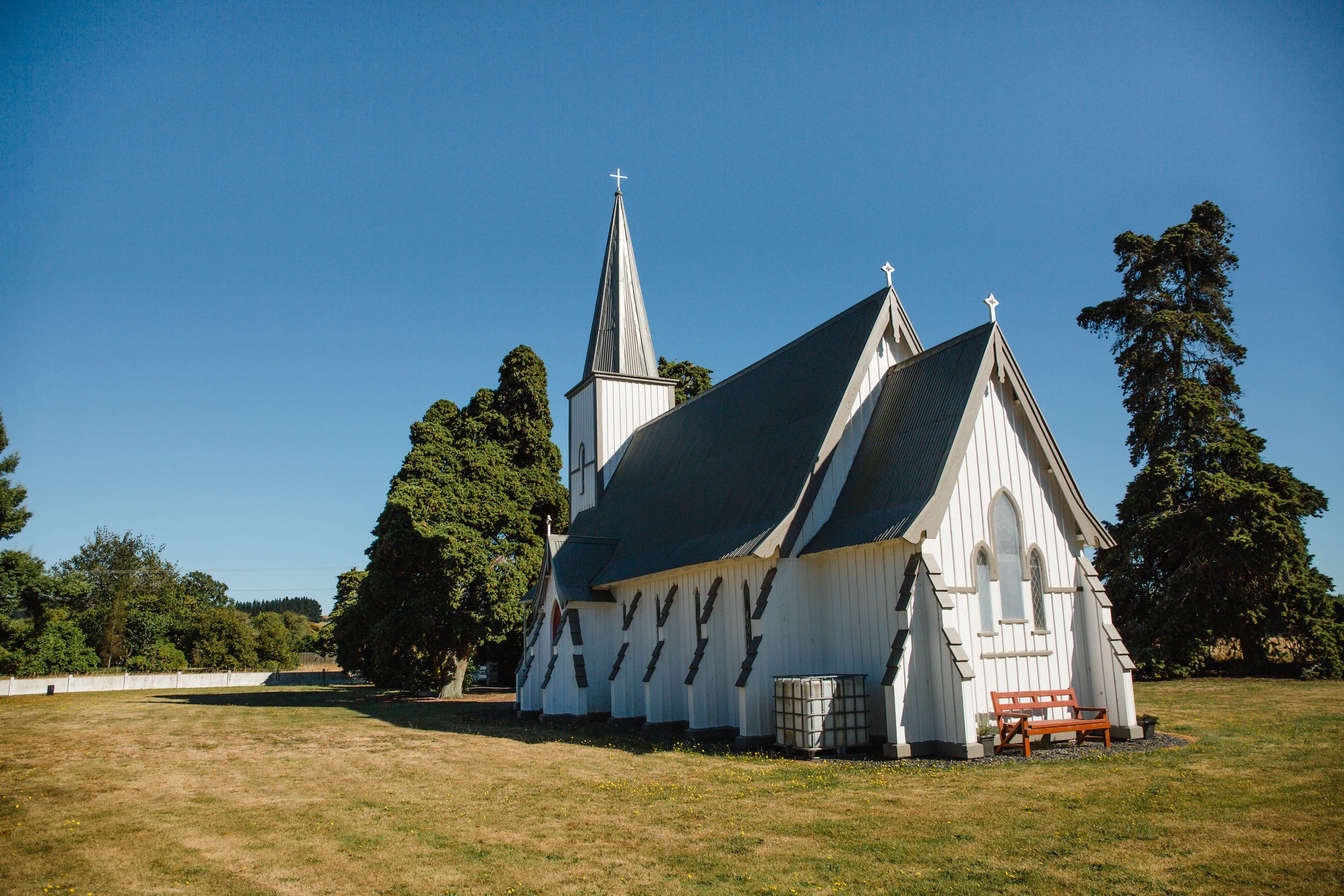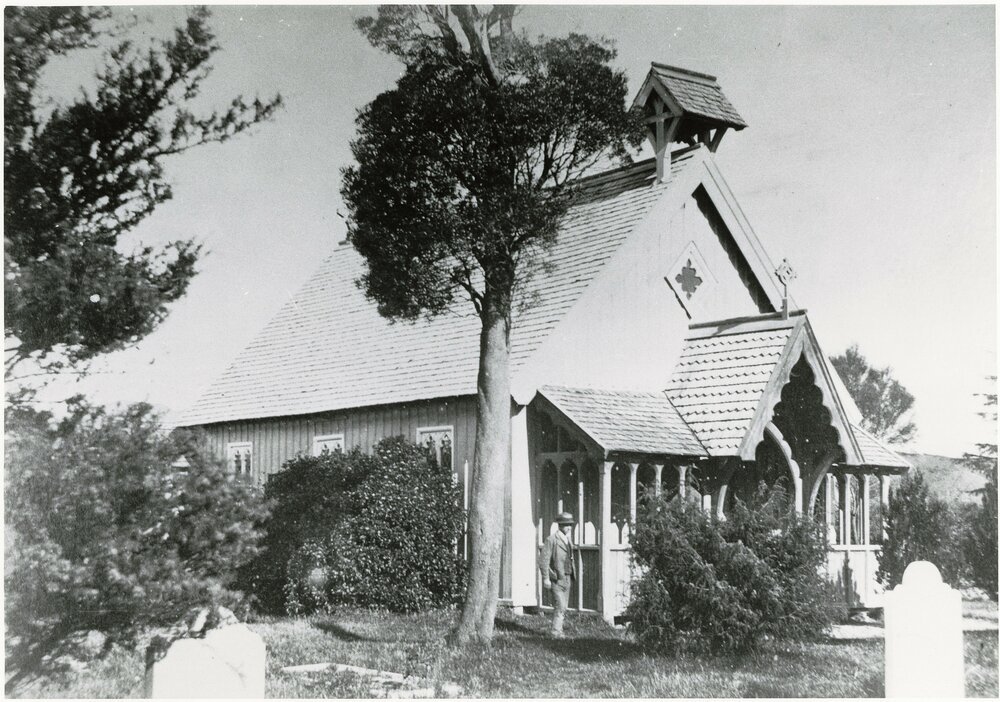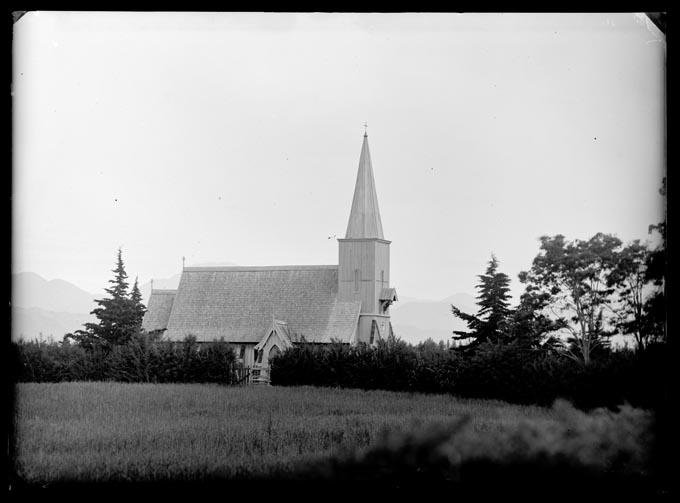Our History
St Paul’s, Brightwater
St Paul’s was the sixth church in the Nelson Diocese. Before the building was built services had been held in a tent in the area known as Spring Grove.
Photo from Tasman Heritage, Waimea South Collection
In 1853 Mr Stratford gave a donation of £100 and Mr Dickenson gave five acres of land valued at £50 for a church and parsonage. The vicar of course needed land to graze his horse and house cow.
A list of members of the public promised money and labour.
The Rev T Bowden was appointed the first minister and he oversaw the construction.
The building was opened on Sunday August 9th 1857 by Archdeacon Paul deputising for Bishop Selwyn.
Photo from Tasman Heritage, Waimea South Collection
The first Bishop of Nelson, Bishop Hobhouse, lived in the vicarage and looked after the district which stretched from Stoke to Appleby to Wakefield for several years. Sadly, while he was there his wife Mary died in childbirth and is buried in the churchyard. The porch was added to the church building in her memory.
The graveyard was consecrated in 1862.
In 1896 the church building was enlarged by moving the Chancel 12 feet east.
In 1903 the Vicarage was burnt down and with it most of the Church records. A new house was completed in 1904.
In 2017 a new Vicarage was built.
Inside the church building there are many historic memorials given in memory of early settlers, long term parishioners and men who lost their lives in the World Wars. The beautiful embroidery was done by diligent ladies during the 1900s.
The church building is still used for an occasional service and a quiet place for prayer.
St Michael’s, Waimea West
St Michael’s was the first Anglican Church in the Nelson settlement and one of the first in the South Island.
Photo from Nelson Provincial Museum, Tyree Studio Collection
Soon after the first ships arrived on 1st February 1842 the settlers made their way up the Waimea River to build homes and plant crops. By the end of 1842, there were 100 people living on the west side of the river in what they called The Village.
The first public worship service was held in John Kerr’s barn on 6th November 1842 led by the Rev C. L. Reay.
The Rev C. W. Saxton offered an acre of land and a subscription was taken up of both money and labour to build a church building. This was not enough so The Honourable Constantine Dillon who lived nearby offered to lend the money in the meantime. However this was not needed as Bishop Selwyn found £35 from a £5000 Company Reserve fund for Church purposes and £35 from charitable funds in England for Church purposes. Total cost £105.
The building which stood in the middle of a fenced acre, part of which was consecrated as a cemetery in 1864, was opened on Sunday 24th December 1843, by the Rev C. L. Reay. Bishop Selwyn was away in the Chatham Islands but he had seen it and wrote it was “a neat little building to hold 100 persons with a small bell tower.”
It is assumed that it was built of Kahikatea because it became riddled with borer and repairs were soon needed and a new tower was built.
Regular services were held including families of other denominations. Furnishings and memorials were given by generous supporters.
Photo from Tasman Heritage, Waimea South Collection
Captain Francis Horniblow Blundell arrived in 1850 and settled in Staplegrove behind the church. He and his family were very involved in St Michael’s.
The congregation decided to become the parish of St Michael’s Waimea West in 1856 and also to build a parsonage in Spring Grove (as Brightwater was called then).
The Blundell family gave an acre of land on the south side of the church for church purposes but it was never needed and was sold in 2015 to help finance a new Vicarage in Brightwater.
In 1866 plans were drawn up for a new church building. A subscription list has the names of most of the pioneer families. It was decided that the building be a memorial to Captain Blundell so there is a memorial stone to that fact inside the church.
Bishop Selwyn took the service for laying the foundation stone on November 24th 1866. Cost £380.
The old church building was moved further south and used for a Sunday School for a while, legend has it that it blew down in a storm.
The new church building was consecrated in November 1867 by Bishop Suter. Again, furnishings and gifts were given by generous people at the time and since then other furnishings have been given by families in memory of long-serving parishioners.
The front fence was erected in 1960 and is “dedicated to the men and women of faith who have served faithfully to maintain that which was founded”.
In 2018 a service was held to celebrate 175 years of worship on this site.
A congregation of 10-20 people meets here every Sunday at 8.30. The church is a popular wedding venue.







